#African-Canadians
Text
Black History Month: Learn More
February is Black History Month in Canada. As February comes to a close, it is important to remember that while we make a point of emphasizing Black History this month, we know that Black History is Canadian History, and as such it is something to learn and celebrate every month of the year.
Here are some more online resources to help you continue to explore Black History in Canada:
BC Black…
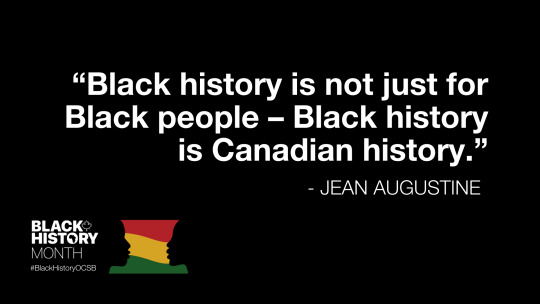
View On WordPress
0 notes
Text

Ayo Leilani / Witch Prophet (Etmet Musa)
Gender: Female
Sexuality: Lesbian
DOB: 8 October 1982
Ethnicity: Ethiopian, Eritrean
Nationality: Canadian
Occupation: Singer, songwriter, musician
#Ayo Leilani#Witch Prophet#Etmet Musa#lesbianism#sapphic#lgbtq#female#lesbian#1982#black#african#Ethiopian#Eritrean#canadian#poc#singer#songwriter#musician
64 notes
·
View notes
Text
⸻ #48 GIFS, NADINE BHABHA [unknown] in the holiday shift, ep. 1. (more gifs will be added later)
To access the gif pack, click on the source link (or the link in the answers). These were all made by me from scratch, do not repost as your own or in a gif hunt. You can use/edit them to your liking, just credit me (@gifsbymel). If you find it useful or use my gifs, please reblog or like this post.
CONTENT WARNINGS : Christmas vibes
AVAILABLE: tumblr, google
TOTAL GIF COUNT: 48 gifs
If you like my work, consider support me on KO-FI!


#nadine bhabha#the holiday shift#canadian actress#tessgifs#usermina#userbass#userdevon#sparklingdocta#dearindies#fcxdirectory#gifsociety#thegifpackreblogs#supportcontentcreators#nadine bhabha gif pack#nadine bhabha gif hunt#gif pack#gif hunt#underused fc#Guyanese fc#south african fc#faceclaims#tonkinwrites
21 notes
·
View notes
Text
In Cinderella Tales From Around the World, I've now read all the tales from the United States and Canada. Most of these variants are Native American; some scholars think the archetype of Cinderella spread to these tribes from French Canadian settlers, but the indigenous people made it their own. There are also some US and Canadian variants from non-indigenous sources, which the book follows with two similar versions from the West Indies.
*The first Native American variant in this book is an Ojibwe version. The heroine is abused by her stepmother and two stepsisters, but a manitou (spirit) gives her fine clothes and a magical box in which to secretly store them. Some time later, the stepmother sends her to fetch water, and along the way the girl meets her grandmother, who warns her that she'll hear music, but not to look back in its direction – if she succeeds in not looking back, she'll become more beautiful than ever. She does, so one of the stepsisters sets out to the same place to gain new beauty too, but she ignores the grandmother's warning, looks back, and turns ugly. Some time after this, a dance takes place, the heroine attends wearing the dress the manitou gave her, and the chief's son falls in love with her and marries her. But after she gives birth to a son, the stepmother sticks a magic pin in her that turns her into an elk, and one of the stepsisters takes her place. Yet as in similar European variants, every day the elk comes back to nurse her baby, and eventually her husband finds her and pulls out the pin, restoring her to human form. He then has the stepmother and stepsisters executed.
*Another variant, from the Mi'kmaq and Algonquin peoples, is one I grew up with: it's been adapted into two picture books, The Rough-Face Girl and Sootface, and as "The Indian Cinderella" in an episode of the cartoon series Adventures from the Book of Virtues. The heroine lives with her father and her two cruel older sisters, who destroy her beauty by burning her with hot coals, singing off her hair and leaving her face covered with scars. Meanwhile, near their village lives a great, mystical chief or warrior who is invisible, or who can make himself invisible. Every girl in the village wants to marry him, including the two sisters, and they all dress in their finest to go and meet him. But the Invisible One will only marry a maiden who can see him, so his (visible) sister meets each one of them, and tests them by asking what his sled-strap and bowstring are made of. All the maidens, including the heroines' sisters, tell lies and are sent away. But the heroine dresses herself in improvised clothes and goes too, despite all her neighbors jeering at how ugly and shabby she looks. When the Invisible One's sister asks the usual question, she replies that his sled-strap is the rainbow and his bowstring is the Milky Way. This is the true answer. The sister then bathes her, which makes her hair grow back and heals her burn scars to reveal her natural beauty, and she marries the Invisible One.
**There's also a Huron variant on this story, with long additional episodes where suitors court the two older sisters, but they disdain the men, set near-impossible tasks for them, and when they succeed, finally say they'll marry them only when they've finished embroidering fabrics for the wedding. They force their younger sister to do the embroidery for them, but every night, like Penelope in The Odyssey, they undo some of it. Eventually, however, a great invisible chief comes to call, and the older sisters lie that they can see him but describe him inaccurately, while the youngest sister describes his true, otherworldly appearance and becomes his bride.
*The Zuñi tribe has a variant called The Turkey Girl, which stands apart from most others by having a sad ending. The heroine is a poor orphan, who either lives alone or with abusive sisters depending on the version, and earns her living by herding turkeys. One day a sacred dance is held and she longs to attend, so her turkeys magically wash her and dress her in finery and jewelry. But they warn her to come back before sunset to lead them home and feed them. The girl promises to do so, but at the dance she enjoys herself so much that she doesn't bother to go home in time. She comes back after dark to find that all the turkeys have fled into the wild, abandoning her to loneliness and poverty. This tale seems to be an allegory, warning poor people whose fortunes improve not to forget their old friends or be ungrateful to those who helped them.
*The book also includes retellings of Perrault's Cendrillon from Canada, the Southern US (written in slave dialect), the Bahamas, and Martinique. They're not different enough from from Perrault's version to warrant descriptions, but it's interesting to see the story told with each of these places' local flavors and dialects.
@ariel-seagull-wings, @adarkrainbow, @themousefromfantasyland
#cinderella#fairy tale#variations#cinderella tales from around the world#heidi ann heiner#native american#ojibwe#mi'kmaq#algonquin#zuni#french canadian#southern usa#african american#the west indies#the bahamas#martinique
12 notes
·
View notes
Text








Electric trains
#train#pennsylvania railroad#South African Railways#Canadian National Railways#elektriska#amtrak#tait set
23 notes
·
View notes
Text
Okay question for anyone who’s watched Sweet Tooth! What is Abbot’s accent??
#I’m accent deaf lol#it sounds to me like either south african or new zealand but my mum said it’s canadian???#and johnny doesn’t have the same accent which makes me second guess myself#king rambles#sweet tooth netflix#sweet tooth#sweet tooth show#netflix#general abbot#douglas abbot
21 notes
·
View notes
Note
Hi lulu, so i was wondering if have you played Far cry new dawn in French, does roger talk in another idiom?
In spanish he stills talk in french
Hi! Yes, I played New Dawn in French and Roger has the same Québécois accent he has in English. It even seems he’s played by the same actor, Vincent Leclerc, whose name appears among the other French voice talents in the credits.
As for some of the (Canadian) French words he uses, such as “osti”, “tabarnak”, or “caulisse”, they’re typical slang/swear words from Québec that we don’t use in France, so they kept them in the French version and they sound as funny and exotic as they do in English.
It’s rare that Far Cry characters who speak with a non-American accent end up also having an accent in the French version of the game, but Roger thankfully kept his!
#it’s a good question because yeah sometimes they have to use another language#like in the film 'ghost dog: the way of the samurai' the character played by isaach de bankolé speaks french but no one understands him#they had to change that in the french version so he speaks an african language called yoruba instead#the actor is fluent in it because from what I’ve read it’s his parents’ native language#many french characters in disney movies have an italian accent in france#and the ‘'mi casa' is french for 'front door'’ joke in big hero 6 became ‘'mi casa' means 'door' in german’ in the french version#also I’ve recently realized they switched to english much earlier in the original intro scene of inglourious basterds#in the french version it’s only when landa is lighting his pipe that he suggests they continue the conversation in english#then in the film all english-speaking characters talk in french but french people also still speak french haha#far cry new dawn#roger cadoret#I watched a bit of spanish roger and while he does use canadian french words it didn’t sound like he had an accent to me#I may be wrong though#I also watched a bit of roger in the other languages and here’s what I found#german: french accent and words#italian: no french word or accent#japanese: no french accent and probably no words (I’m not sure)#russian: no accent (I think) but french words
10 notes
·
View notes
Text

Taylor Russel in light wash denim and a fur coat and baseball cap in West Village 24'
#taylor russell#light wash#denim#jeans#casual chic#fashionable#baseball cap#african american#celebrity#canadian#actress#faux fur coat#white tee#black sunglasses#styleblogger#ootdshare
3 notes
·
View notes
Photo
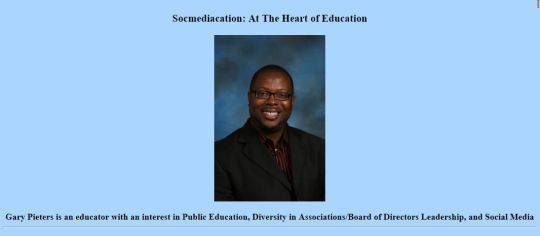


Professional websites used to look like this.
#gary pieters#socmediacation: at the heart of education#teacher#teaching#canada#canadian#diversity#Black heritage#African Canadian#local solutions to local issues#geocities#old internet#old web#webcore#personal page#professional page
22 notes
·
View notes
Text

#Nichelle#Axel#total drama series#4th gen cast#Millie#African-Canadian#Emma (tdr)#Hispanic/Latina#Hezekias#Zee#Hispanic/Latino#Priya#Indian-Canadian#Damien#tdi24#tdr
3 notes
·
View notes
Text
huge respect to @myxinidaes for reblogging that post with 100 birds
#ok im gonna try to list 100 birds. house sparrow song sparrow fox sparrow white-throated sparrow dark-eyed junco#robin. ovenbird. hermit thrush. carolina wren. cardinal#carolina chickadee. house finch. purple finch. goldfinch. white-breasted nuthatch#red-breasted nuthatch. hooded merganser. american coot. wood duck. mallard duck#surf scoter. ruddy duck. black duck. northern shoveler. common loon#crow. fish crow. raven. turkey vulture. bald eagle#feral pigeon. mourning dove. turkey. quail. AMERICAN WOODCOCK#solitary sandpiper. herring gull. great black-backed gull. piping plover. killdeer#yellow-rumped warbler. pine warbler. palm warbler. black and white warbler. i cant think of a fifth warbler. red tailed hawk#cooper's hawk. osprey. barn swallow. tree swallow. blue jay#peacock. egyptian goose. peregrine falcon. merlin. canadian goose#green heron. starting to struggle here. flamingo. skua. albatross. great blue heron#barn owl - snowy owl - great horned owl - barred owl - WHAT was that little owl in central park called - uhhh mandarin duck#chicken. california condor. rose finch (there are many but i dont remember any of the weirder species). adelie penguin. emperor penguin#northern mockingbird.. starling.. grackle.. african gray parrot.. monk parakeet#stellar's jay ... baltimore oriole.. argh what's the other oriole we get. DOWNY WOODPECKER.. hairy woodpecker... pileated woodpecker#red-headed woodpecker. red-bellied woodpecker. ruby-throated hummingbird. scarlet macaw. whooping crane#whippoorwill. snowy egret. great egret. european robin. bird of paradise#there's a warbler that's just 'yellow' right? yellow warbler? cormorant...#struggling with some where i cant remember the exact name like was it a 'double crested' cormorant or something else.#zebra finch .. blue-footed booby... pelican....#australian magpie. The Other Magpie. ibis (nonspecific). potoo. EASTERN BLUEBIRDDDDDD !!!#ceruleanrambling#now i can go read yours
17 notes
·
View notes
Text
More Books for Black History Month
Come down to the School Library to check out these books for Black History Month in Canada.
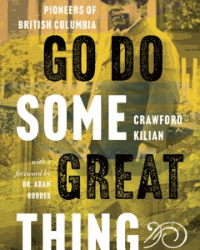
View On WordPress
0 notes
Text

Angela James
Gender: Female
Sexuality: Lesbian
DOB: 22 December 1964
Ethnicity: African American, white
Nationality: Canadian
Occupation: Former Olympic ice hockey player, ice hockey coach, ice hockey referee, entrepreneur
Note: Considered the first superstar of modern women's ice hockey, James has been honoured by numerous halls of fame.
#Angela James#lesbian athletes#lgbt#lesbianism#wlw#female#lesbian#1964#black#african american#biracial#canadian#poc#olympian#athlete#entrepreneur#coach#ice hockey#referee#first
62 notes
·
View notes
Text
Viola Desmond
A Canadian activist and businesswoman, Viola Desmond (1914-1965) helped start the modern Canadian civil rights movement.
Born to a Black father and White mothers in Halifax, Nova Scotia, Desmond became a beautician to address the lack of hair-care and skin-care products for Black women. She was not able to train in Halifax beautician schools, and left to train in three different cities (including one of Madam C. J. Walker's schools in New York). She returned to Halifax, where she opened a hair salon and her own beauty school for Black women, which explicitly gave admission to those who were denied entry to Whites-only training schools.
On November 8, 1946, Viola attended a movie in a segregated theatre. Unaware of this police and near-sighted, Desmond was sold a balcony ticket but sat in the floor section to see better. She was asked to move, refused, and she asked to be sold a floor ticket to be fair (they cost slightly more). Desmond was unaware of the segregation policy, as it was not standard throughout Nova Scotia.
Desmond was forcefully removed from the theatre, injuring her hip, and spent 12 hours in jail. The difference in price between the two tickets meant she had evaded a tax of a single cent (the balcony tax was 2 cents, the floor tax was 3 cents). Desmond, supported by the Nova Scotia Association for the Advancement of Coloured People (NSAACP), filed a lawsuit.
The lawsuit was dismissed. The Justice, when doing said, said that she was in the right, but the case had been brought as regarding to tax evasion, not civil rights.
The case was highly publicized throughout Canada, and was a centerpoint around Canadian civil rights activism. Desmond was granted a posthumous pardon (this first in Canadian history) in 2010 and appeared on a Canadian banknote.
#history#canadian history#black history#african american history#viola desmond#nova scotia#tw racism#tw segregation
42 notes
·
View notes
Text

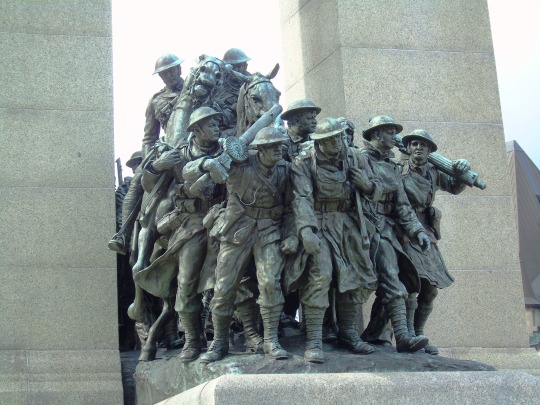

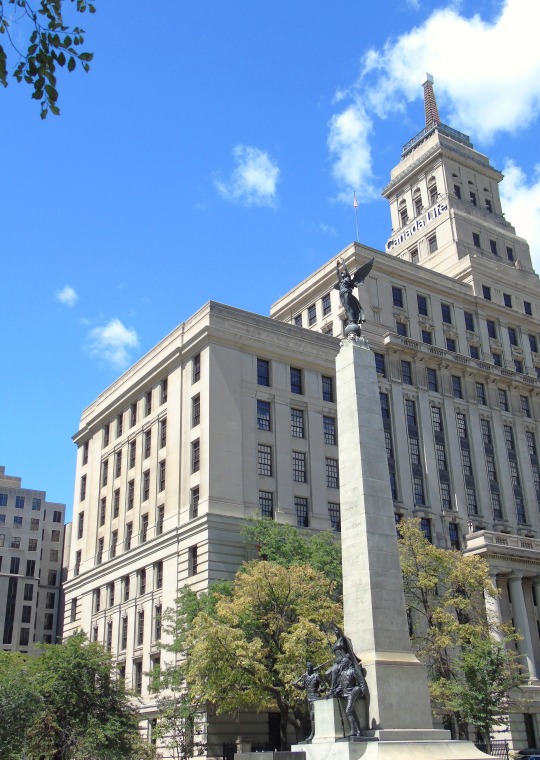

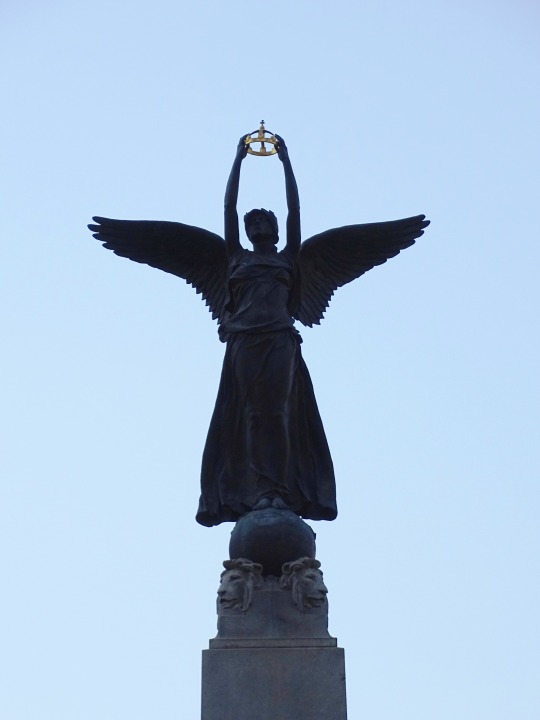



The Second Boer War erupted in South Africa between the British-ruled Cape Colony, and the Boer-ruled Transvaal and Orange Free State on October 11, 1899.
#South African (Boer War) Memorial by Walter Allwards#Second Boer War#travel#11 October 1899#anniversary#Canadian history#Toronto#Ontario#Ottawa#Canada#summer 2018#original photography#cityscape#architecture#fountain#public art#sculpture#2015#The Response#Canadian National War Memorial#National War Memorial by Vernon March
4 notes
·
View notes
Text
Winter brings with it the lupine urge to fling myself into a snowdrift and play. And then the realization that I don't have fur anymore hits and yeah. No rolling in snowdrifts. Spring is now bringing with it the lupine urge to just drop whatever shit I'm carrying, flop to the ground, and roll around in the grass. I swear to god, my wolf instincts consist of "I can eat that raw, right?" and "I'm upset, time to howl" and "roll in the snow/grass/sand/whatever" and nothing actually remotely useful.
#wolf therian#Canadian timber wolf therian#African golden wolf therian#therian#therianthropy#Welcome to my day to day life as a wolf.#It's a lot of resisting doing this kind of shit.
10 notes
·
View notes